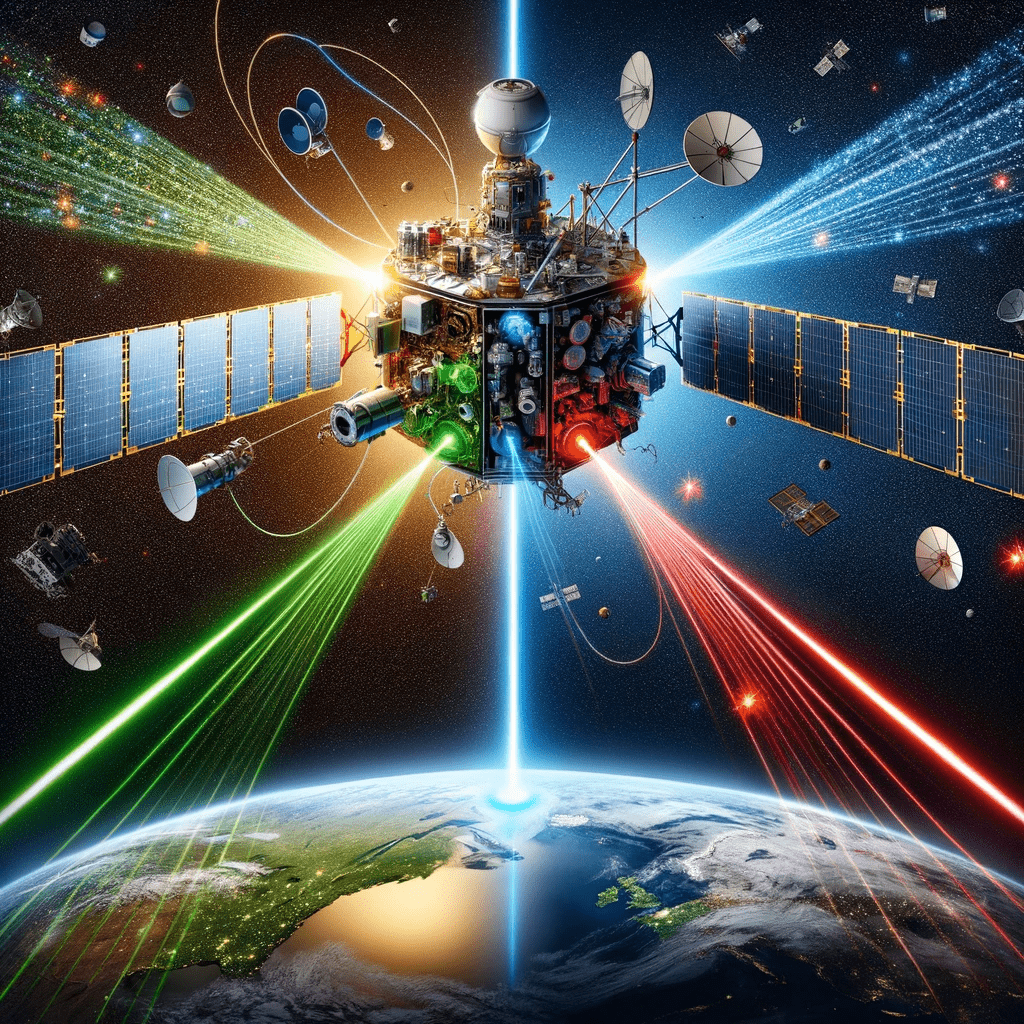Satellite Lasers

Incidents of satellite lasers hitting the ground and being recorded by witnesses are not common occurrences. There have been instances of ground-based lasers interacting with satellites, but these incidents typically involve satellites being illuminated by lasers from the ground, not the other way around.
The U.S. National Reconnaissance Office (NRO) confirmed that at least one American satellite was illuminated by a ground-based laser operating in China. This was reported as a test, and the director of the NRO at the time mentioned that it did not degrade U.S. monitoring capabilities. The Department of Defense had been indicating for several years that China was developing anti-satellite capabilities, including ground-based lasers designed to damage or blind imaging satellites.
On October 17, 1997, the Pentagon conducted a test where the U.S. Army’s Mid Infrared Advanced Chemical Laser was fired at an experimental U.S. Air Force satellite. The objective of this test was to determine the feasibility of using lasers to disrupt or disable satellites and to assess the vulnerability of U.S. spacecraft to such attacks. The data from the test indicated that the laser illuminated the satellite, but it was not conclusive on the laser power levels necessary to disable or damage the satellite’s sensor.
Space-based LiDAR systems can be categorized based on their measurement targets. Lidars designed to measure the distance and properties of hard targets, like the surface of a planet, are often called laser rangers or laser altimeters. On the other hand, lidars meant to measure the backscattering and absorption of volume scatter, such as clouds and aerosols, are typically just referred to as lidars. These can include cloud and aerosol lidar, wind lidar, CO2 lidar, among others. The advantage of space-based systems over ground-based counterparts is their ability to provide global coverage and continuous measurements.
If you were standing on the ground, on a dark night you would not be able to see the laser beam from a space based lidar system. Space-based LiDAR systems, like those used in NASA’s missions, operate at very short wavelengths with narrow beams, and their laser pulses are designed for specific remote sensing tasks, such as measuring the distance and properties of hard targets or the backscattering and absorption of volume scatter like clouds and aerosols. These laser beams are not visually perceptible to the human eye when projected from space to Earth. Furthermore, the power and frequency of these laser pulses are calibrated for specific measurement tasks and are not intended to be visible from the ground.
The video reports on an unusual sighting over the Hawaiian Islands, where green lasers were seen emanating from the sky. Initially thought to be from a NASA satellite, it was later clarified that the likely source was Chinese satellites equipped with CDL instruments. The video includes comments from a University of Hawaii astronomer and a former Marine Corps Chief of Staff. They discuss the satellites’ purpose, likely environmental measurement, and express skepticism about the Chinese motives. The video also touches on broader concerns regarding the Chinese military’s capabilities in space.
The sighting of green laser beams over Hawaii, occurred on January 28th, 2023. This event coincided with the detection of a suspected Chinese spy balloon by the U.S. off the coast of Alaska. The green lasers were captured on camera from the Subaru Telescope on Mauna Kea, which is operated by the National Astronomical Observatory of Japan.
Developed by China’s Shanghai Academy of Spaceflight Technology, part of the China Aerospace Science and Technology Corporation (CASC), the Daqi-1 satellite, also known as the Atmospheric Environment Monitoring Satellite (AEMS), represents China’s growing expertise and interest in space technologies. Equipped with advanced instruments like the ACDL (Atmospheric Cloud Discrimination Lidar), this satellite is tasked with monitoring atmospheric pollutants and greenhouse gases, playing a vital role in studying environmental and climatic changes.
Despite the scientific and civilian nature of Daqi-1, the satellite’s technology exemplifies the dual-use potential of space-based assets. While there’s no evidence to suggest its current use in military applications, the versatility of such technology means it could theoretically support military objectives. This dual-use potential, where civilian technology could be repurposed for military goals, is a significant consideration in space technology, especially for nations like China where space endeavors are closely linked to state interests. They demonstrate not only advancements in environmental monitoring but also the strategic capabilities of nations in space.
Satellite lasers can emit light in various colors like red, green, blue, and infrared, each with unique atmospheric interactions and purposes. Infrared lasers, typically for atmospheric studies, are invisible to the naked eye. This event highlights the complexities of interpreting and understanding space-based activities, especially in the context of growing international interests and concerns in space technology and security.
This dual-use aspect of space-based technologies, straddling civilian research and potential military applications, underscores the importance of cautious and informed international dialogue and policy-making in space technology and exploration.


